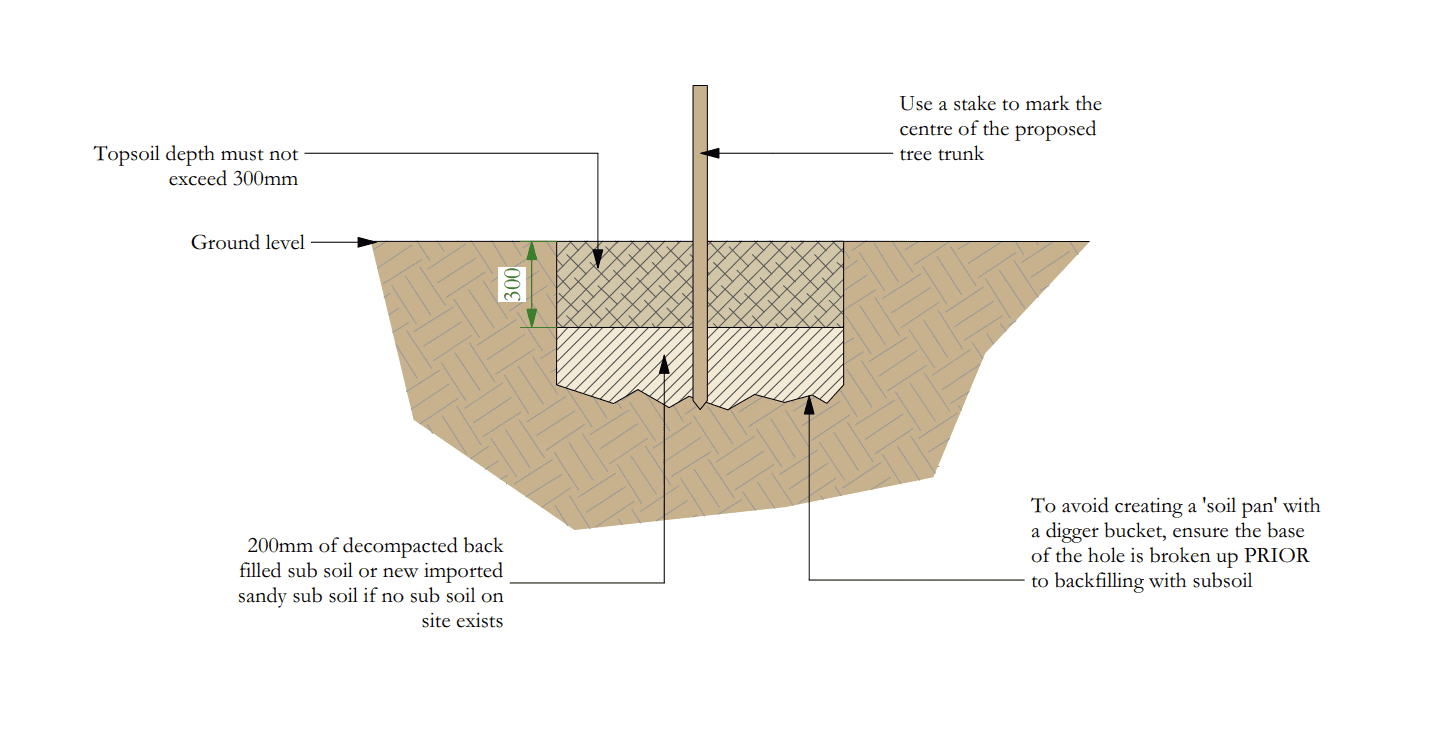Creating a Tree Pit

Specification in brief:
This is a general specification for the preparation of a tree pit. An exact specification will be instructed by the designer on site once the tree pits have been dug.
For the purposes of the quotation, an allocation for option 2B should be presumed.
The Method:
Manually or mechanically dig a hole 1m x 1m wide by 600mm deep, keeping the top and sub soils separate.
Using either a hand fork, or ripper tooth attachment on the digger, ‘break up’ the base of the hole to a depth of around 100mm.
Option 1: If the removed subsoil is not clay or a heavy silty-clay, and can be broken up to a crumbly texture, replace 300mm of this sub soil material into the hole. Do not compact.
Option 2: If the removed subsoil was heavy clay, dispose of this subsoil and backfill the hole with 300mm of GT Subsoil
Then
Option A: top off with 300mm of the removed topsoil (if good quality and free from large stones, debris, plant roots and weeds)
Or
Option B: with 300mm of Landscape20 topsoil or GT Topsoil
Finally
Finish off by marking the centre of the tree pit with a stake (to be removed only when the tree is planted).
Additional Information:
Maximum topsoil depth of 300mm.
The rootball of the tree should sit on subsoil and NEVER on top soil, and with larger rootballs, the subsoil will also sit around the lower section of the rootball.
The tree pit should be as shallow as possible, and usually only requires excavation to the depth at which the rootball will sit. If machine dug, it is essential to decompact the soil in the base of the pit where the excavator bucket often causes smearing and compaction.
After placing the rootball, the tree pit can be backfilled with the excavated topsoil, ensuring that any soil improvers eg PAS100 has been evenly mixed with the backfill topsoil and NEVER into the subsoil.
For larger trees, there will be a need to excavate a much deeper pit to accommodate the sizable rootball. This requires excavation into the subsoil. It is not always appropriate to backfill with the same subsoil if it is heavy clay or very silty. It is advisable to use a high-sand-content subsoil or even a quarried sand to sit the rootball on and to surround any area of the rootball (greater than 300mm deep) with the sandy subsoil. Sands and sandy subsoils will support the weight of the rootball better than silt or clay, and thereby prevent later settlement which can cause the tree trunk to drop lower than the surrounding soil level.
Tree roots will grow very well through the sand.
The tree should be mulched post planting with a doughnut of organic matter, however this is included within the planting specification and not part of this works.
